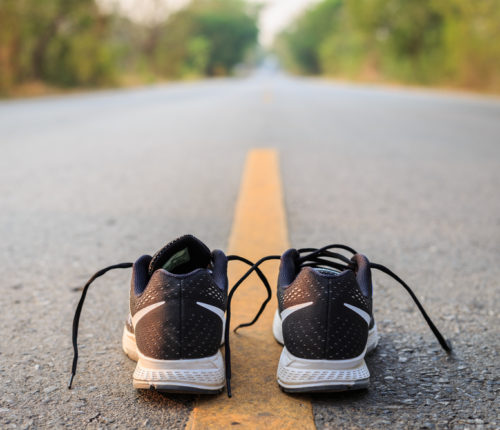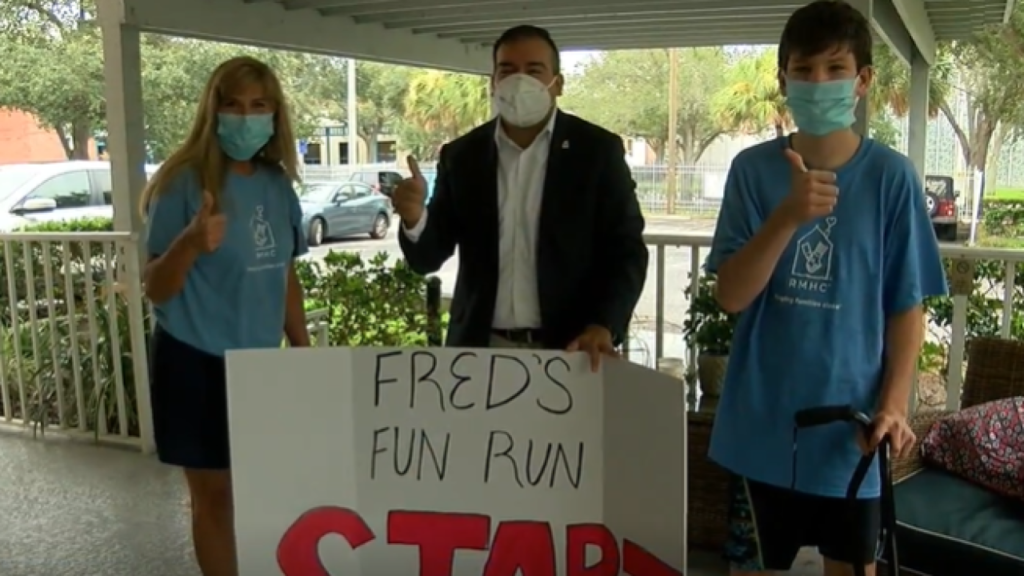
11-Year-Old with Cerebral Palsy Defies Odds, Runs 5K
Running a 5k is challenging for many people. A 5k is 3.1 miles, which is a healthy distance to walk or run in a single event. Now imagine running three miles while living with cerebral palsy. That is exactly what one 11-year-old is doing in Tampa Bay, Florida.
Fred Ginman is an 11-year-old who is defying the odds. Fred has cerebral palsy and dreams of one day being able to walk on his own. He is now inspiring millions of people with his goal, and with his dedication to helping raise money and awareness for cerebral palsy.
Dreams of Overcoming Challenges of Cerebral Palsy
Since 2012, Fred and his mom have spent more than 600 nights at the Ronald McDonald House in Tampa Bay. Originally from Brazil, the family has been coming to Tampa Bay for years for treatment. Fred receives powerful physical therapy to help improve his ability to walk. The facility uses modern and sophisticated therapy methods.
And now, Fred wants to give back to the facility that has done so much in supporting his goal to walk freely. Fred is currently planning a 5k event called “Fred’s Fun Run”. Over the course of 10 days, Fred is walking and running the 3.1 miles to complete the event. He is going in laps around the courtyard of the Ronald McDonald House, averaging 500 meters a day.

Fred’s event has gained nationwide attention. The Ronald McDonald House has started a webpage dedicated to the event. People can sponsor Fred as he completes his event. There are also options for joining Fred as he completes the 5k, including running virtually.
All of the funds that are raised from sponsoring will be donated to the Ronald McDonald House. Fred and his mom want to give back and support those who continue to support Fred’s therapy. Funding for the Ronald McDonald House has decreased during the COVID-19 pandemic. Staff at the facility are inspired by Fred’s goal and generosity.
Meanwhile, Fred has a simple-yet-inspiring message for anyone struggling to overcome a disorder like cerebral palsy. He says,
“If I am able to do it everyone can do it.”
Living with Cerebral Palsy
Living with a birth injury like cerebral palsy can certainly have challenges for the individual and his or her family. Cerebral palsy affects each person differently. The type of cerebral palsy and the severity of the disorder will influence how the individual is affected, including their estimated cerebral palsy life span. Some of the challenges often experienced by children with cerebral palsy include:
Mobility Difficulties
Many children with cerebral palsy have difficulties with mobility. Some children can sit down or stand up on their own, but need help walking. Others can more easily walk, but need help with balance. Children with severe types of the disorder may not be able to move at all without assistance.
Communication Difficulties
Some people with cerebral palsy suffer from speaking difficulties. Fortunately, most children benefit from speech therapy. The earlier speech therapy is started, the better the chances that the child will develop functional communication.
Personal Care Difficulties
Most children with cerebral palsy need some level of help with personal care. Many tasks like getting dressed, brushing hair or tying shoelaces are difficult because of a lack of fine motor skills. Many children are able to do basic tasks on their own, especially with the help of occupational therapy.
Learning Difficulties
Many children with cerebral palsy have difficulties with learning. That does not mean that they are delayed or incapable. But rather, they experience challenges that make learning more difficult. For example, children with limited or no mobility, and those who cannot speak well, may have a difficult time attending school.
At home, children may also have difficulties with learning day-to-day skills. Doctors often recommend that parents work with their child a little bit each day to help them learn important life skills. There are learning tools and electronic devices that can help parents teach their child about important skills. These are also helpful in the education setting.
How Exercise Helps Children with Cerebral Palsy
For Fred, exercise and physical therapy has been a powerful tool in helping him begin to overcome the challenges of cerebral palsy. Exercise is helping him improve his walking skills and overall health. It is also providing a way for him to connect with other people.
Anyone with cerebral palsy can benefit from exercise. Children, especially, get numerous benefits from exercise, including:
- Strengthens muscles
- Aids in balance
- Improves coordination
- Helps them develop a strong gait
- Helps them become more independent
- Improves sleep habits
Walking, outdoor play or swimming are all great options for exercise that families can enjoy together. The more independent and strong the individual becomes, the more opportunities will present themselves for growth and development. Ultimately, this benefits the entire family.

